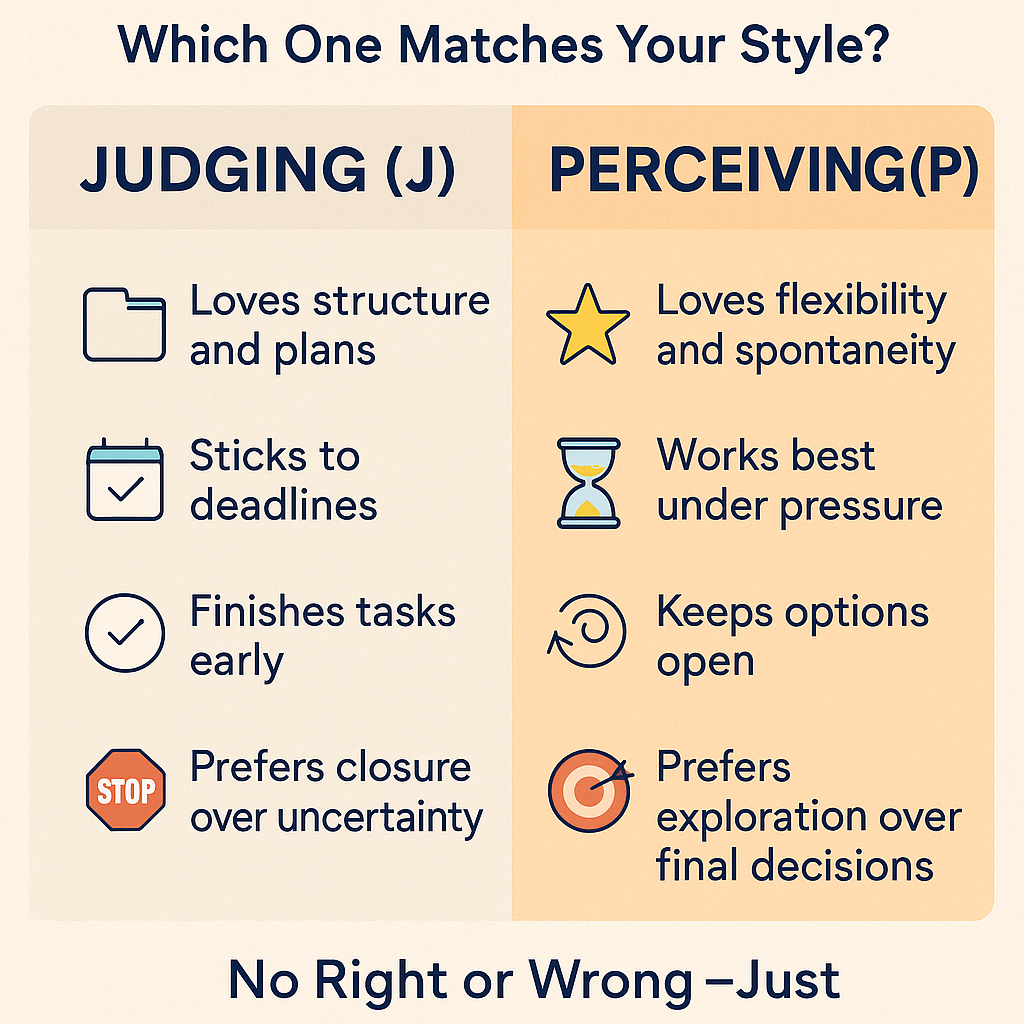When exploring personality types, especially in frameworks like the Myers-Briggs Type Indicator (MBTI), two important traits often come up: Judging (J) and Perceiving (P). Understanding the difference between Judging and Perceiving can help you better understand yourself and others. Let’s dive into the key differences between these two approaches to life!
What Does Judging Mean?
People with a Judging preference like structure, plans, and organization. They prefer to have things settled and enjoy making decisions quickly. Judging types often:
- Create to-do lists and follow them carefully.
- Prefer clear deadlines and schedules.
- Feel uncomfortable with too much uncertainty or last-minute changes.
- Enjoy finishing tasks before relaxing.
Judging doesn’t mean being judgmental — it simply means preferring a decided and orderly life.
What Does Perceiving Mean?
Those with a Perceiving preference are more flexible, spontaneous, and open to new information. They like to keep their options open and enjoy adapting to new situations. Perceiving types often:
- Prefer to stay open to new opportunities until the last minute.
- Feel energized by flexibility and change.
- Enjoy starting projects but may struggle to finish them without a deadline.
- Adapt easily to unexpected challenges.
Perceiving doesn’t mean being disorganized — it’s about staying open to experiences.
Main Differences Between Judging and Perceiving
| Aspect | Judging (J) | Perceiving (P) |
|---|---|---|
| Decision-Making | Prefers making quick, firm decisions | Prefers staying open and flexible |
| Organization | Likes schedules and structured plans | Likes spontaneity and adaptable plans |
| Approach to Deadlines | Sticks to deadlines | Often works best under last-minute pressure |
| Lifestyle | Values closure and completion | Values freedom and new experiences |
Which One Is Better?
Neither Judging nor Perceiving is “better” — they are simply different ways of interacting with the world. Some situations benefit from the structured approach of Judging, while others need the adaptability of Perceiving. Understanding your preference can help you build better habits, improve relationships, and choose a lifestyle that suits you.
Conclusion
Knowing whether you lean toward Judging or Perceiving can transform how you plan your days, interact with others, and tackle challenges. Both styles have strengths and weaknesses, and by recognizing your natural preference, you can grow in both areas for a more balanced life.





